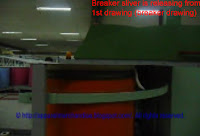Forget your own sim number ? Don't have enough balance to enquiry ? Lets see how to know own mobile number including Airtel, Banglalink, Citycell, Robi, Teletalk.
When i was using cellphone for first time, recovering mobile number or getting own number (if anyone forget) was not so easy. You must had balance in your sim and the minimum volume to be recharge was 300 BDT. Wasn't the amount costly? But this is end of 2013 :) Now a days it's an easiest method.
Say, you've found your lost sim or you have more than two sim cards and forget the number of the sim. On the other hand you have not enough balance in your sim that you can call your friend's mobile to know the number.
So, these hidden code must be helpful for you in that case. Type the following code and press dial button.
 |
| Airtel, Banglalink, Citycell, Grameenphone, Robi, Teletalk |
When i was using cellphone for first time, recovering mobile number or getting own number (if anyone forget) was not so easy. You must had balance in your sim and the minimum volume to be recharge was 300 BDT. Wasn't the amount costly? But this is end of 2013 :) Now a days it's an easiest method.
Say, you've found your lost sim or you have more than two sim cards and forget the number of the sim. On the other hand you have not enough balance in your sim that you can call your friend's mobile to know the number.
So, these hidden code must be helpful for you in that case. Type the following code and press dial button.
































































